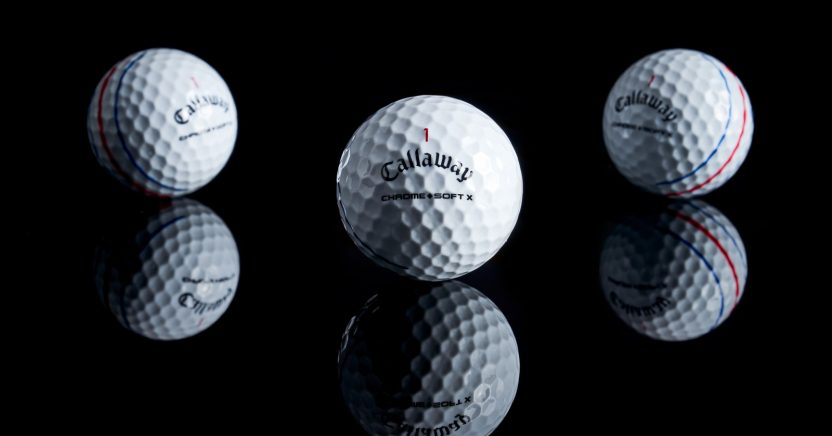Titleist and Callaway, two of the golf industry’s leading ball brands have issued statements reacting to the R&A and UGSA’s proposal to curb the distances that all golfers will be able to hit the ball in future.
The new ruling, details of which were announced on December 6, is scheduled to come into force in 2028 for professionals, and 2030 for amateurs. If imposed, it will result in those with the very fastest swing speeds potentially losing 10-15 yards in distance off the tee, while those with slower swings with lose between 4-10 yards, depending on their relative clubhead speed.
Titleist, the top-selling golf ball brand, and the manufacturer of the Pro V1 range of balls which enjoys widespread usage at all levels of the game, issued a statement to the effect that it did not feel that any curbs in the performance of the golf ball are required in order to secure what the R&A described as ‘the long-term sustainability of the sport’, and that were many other factors at play in preserving the challenge of the game to the world’s best players.
Here is the Titleist statement in full, which is attributed to Acushnet CEO David Maher.
“At a time when interest in golf is vibrant – 2023 will mark the sixth consecutive year in which the number of golfers has grown), golf courses are broadly adding forward tees, back tees are used for less than 5% of rounds, and the average carry distances for female and male golfers are 147 yards and 215 yards, respectively, it is appropriate and necessary that the merits of any proposed equipment rollback are thoroughly evaluated in pursuit of a high degree of consensus and support around meaningful change.
As we consider today’s R&A and USGA announcement against recent feedback provided by the World Alliance of PGA’s and the PGA TOUR, we are also concerned that the golf ball rollback overly impacts golfers and does not fully reflect the input of those closest to the game. There have been requests to align on what data is used and how it is used to draw conclusions prior to any equipment changes being made. Many important stakeholders do not see distance as a problem the way the governing bodies do, and therefore come to differing conclusions about how to proceed to ensure the best possible outcome for the sport.
We support the position of the PGA TOUR and others that there are many areas of focus at the elite level, including initiatives related to golf course setup and conditioning, and other competitive variables which, if desired, can limit the effects of distance while also providing the opportunity for a diverse skill set to succeed at the highest level.
It is also Acushnet’s position that existing golf ball regulations are effective and stand the test of time. Golf balls are already tightly controlled for initial velocity, overall distance, size, weight, and uniformity. As a result of existing initial velocity and overall distance regulation, ball speeds have been moderated as was the intent of the rule.
We note that the mean of the fastest 1% of measured clubhead speeds on the PGA TOUR was flat from 2019-2021 and declined in 2022 and 2023. The mean of the fastest 5%, 10%, 20% and 50% of measured clubhead speeds has been flat since 2017. We consider that the average course playing length on the 2023 PGA TOUR is less than 7,200 yards, just as it has been every year since 2004. We also note that U.S. golf courses built during the period 2010-2020 averaged 6,652 yards – 274 yards shorter than those built between 1990-2010, which is at odds with the notion that equipment has forced courses to expand.
Not all sports have endured from generation to generation the way golf has endured, and the governing bodies deserve credit for having effectively balanced the forces of tradition and technology. This has helped to preserve golf’s unified appeal and values while encouraging innovation that has helped to make the sport more relevant and enjoyable.
We believe that further collaboration and cooperation with the R&A, USGA and other stakeholders is critical prior to moving forward with such a significant equipment regulation change. We continue to advocate for stakeholders to convene to have a meaningful examination of this decision and its consequences, and to discuss alternatives as we look to protect golfers’ enjoyment of the game and the health of golf courses around the world to ensure golf’s promising future.”
Just hours earlier, Callaway Golf, manufacturers of the Chrome Soft golf ball range, which is also a popular ball among the game’s top professionals and millions of amateur golfers, issued its own statement.
The company took a slightly different view to Titleist in that while acknowledging that is against any attempt to change the existing rules around golf ball testing and performance, it said that it if all other alternatives were discounted it would be willing to work with golf’s rules makers on developing balls that would lower distances among tour professionals, but said that amateur players should be able to carry on using whatever ball they chose in order to ensure the long-term growth of the game.
The company said that while it, like Titleist, it is not in favour any golf ball roll back, ‘bifurcation’, with one set of equipment rules for tour professionals and another for club amateur and casual golfers, would be its preferred alternative if maintaining the status quo was not an option.

The full statement, attributed to Topgolf Callaway Brands President & CEO Chip Brewer, reads as follows:
“Topgolf Callaway Brands respects the perspectives of the governing bodies and knows they are acting in what they believe is in the best interest of the game. However, when viewing the same data, we have consistently communicated that we would not have chosen to roll the ball back and we would have preferred bifurcation over a change across the board.
Having said that, we would like to thank and compliment the USGA and R&A for their approach and process in making this decision. Throughout this process, we believe they have been open and thorough in their analysis. They took the time to actively seek input from multiple stakeholders, including us, on multiple occasions and levels. They clearly listened and were thoughtful in their responses; and, when they deemed it appropriate, they modified their approach in ways that benefitted both the game and the industry that supports it.
Along these lines, we appreciate the lead time the ruling bodies have provided to conform to the new rule. This will give us time to redesign and implement new products successfully. They also modified the testing protocols to avoid unnecessary testing ambiguity. Perhaps most importantly, they sought to minimize the impact on the end consumer by providing an adequate grace period for the transition in recreational golf.
Certainly, all leading ball manufacturers, including Callaway Golf, will bear some added expense associated with redesign and tooling; however, there also likely will be new opportunities to differentiate which we look forward to.
Undoubtedly, there will be a lot of further conversation around this subject; particularly regarding whether this decision is good for the game and if all parties associated with the game will adopt the new regulations.
In the end, we believe the game will be best served by us all aligning behind a common set of rules and standards. Therefore, while we will always participate actively in the debate; when a final decision is made, we will align behind it. The game at large has never been stronger and we look forward to being a major part of growing both on and off course golf moving forward.”

